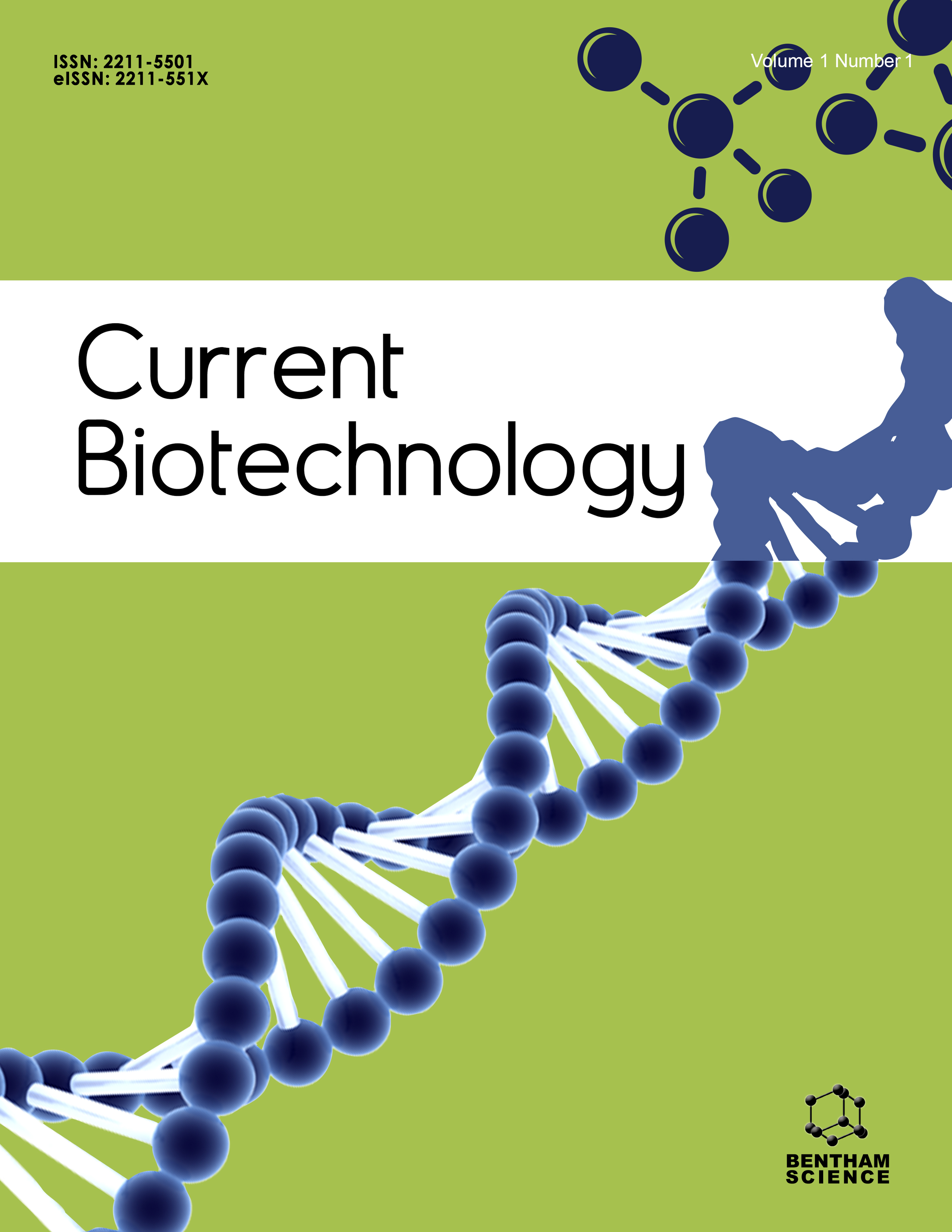- Home
- A-Z Publications
- Current Biotechnology
- Previous Issues
- Volume 8, Issue 2, 2019
Current Biotechnology - Volume 8, Issue 2, 2019
Volume 8, Issue 2, 2019
-
-
Biotechnological Production of Natural Calorie Free Steviol Glycosides in Stevia rebaudiana: An Update on Current Scenario
More LessAuthors: Abeer Kazmi, Mubarak A. Khan, Sher Mohammad, Amir Ali and Huma AliStevia rebaudiana is a vital medicinal plant of the genus Stevia and family Asteraceae. It is commonly used as a natural sweetener plant and its products are 300 times sweeter than the commonly used sugarcane. The sweetening potential is due to the presence of calorie-free steviol glycosides (SGs). The plant species has been extensively profiled to identify steviol glycosides (SGs) with intensity sweetening properties. Read More
-
-
-
Recent Approaches in the Extraction of Citrus Metabolites
More LessAuthors: Fakhru-Nisa, Tehreem Tahir, Muhammad Ashfaq, Mirza I. Shahzad and Syeda Taiba BukhariThe review summarizes the recent (2016-2019) practical applications of novel extraction methods for Citrus metabolite extraction, such as microwave-assisted (MAE), ultrasound-assisted (UAE), super-critical carbon dioxide (SC-CO2) and enzyme-assisted extraction (EAE) with the aim to compare efficiencies based on the criteria of enhanced (%) yield, cost-effectiveness, reproducibility, eco-friendliness, time/energy consu Read More
-
-
-
Antioxidant Potentials of T. indica and its Environmental Application: A Mini Review
More LessAuthors: Babangida S. Katsayal, Abdullahi Balarabe Sallau, Aliyu Muhammad and Auwalu GarbaUnder-utilized and abundant plants found in Africa are endowed with a lot of potentials, which can be coupled and channeled to aid environmental, economic and social development. Tamarind (Tamarindus indica) is one of the most commonly under-utilized plant materials with some reported biological and environmental relevance. In this communication, we reported on antioxidant potentials and environmental role associate Read More
-
-
-
Quality Control Assessment of Dhatryadi Ghrita with HPTLC Method
More LessAuthors: Rashmi S. Pal and Amrita MishraBackground: Standardization of herbal formulation is mandatory for the quality check of drugs for assurance of their therapeutic value. According to the World Health Organization reports, about 80% of the world’s population relies on traditional medicine. Dhatryadi Ghrita, a polyherbal preparation containing eleven ingredients, has a sweet taste, cold potency and sweet post-digestive effects. Objective: In this research a Read More
-
-
-
Effective Substrate Loading for Saccharification of Corn Cob and Concurrent Production of Lignocellulolytic Enzymes by Fusarium oxysporum and Sporothrix carnis
More LessAuthors: Folasade M. Olajuyigbe, Cornelius O. Fatokun and Oluwatosin I. OniBackground: One of the critical challenges of cost-effective bioethanol production from lignocellulosic biomass is the decreasing yield of reducing sugars caused by increasing substrate loading. Hence, it is crucial to determine the best substrate concentration for efficient saccharification of lignocellulosic wastes. Objective: This paper reports the saccharification of corn cob by two lignocellulolytic fungi (Fusarium oxysporum a Read More
-
-
-
Performance of High Molecular Weight Osmotic Solution for Opuntia Betacyanin Concentration by Forward Osmosis
More LessAuthors: Ravichandran Rathna and Ekambaram NakkeeranBackground: Forward osmosis is a sustainable membrane process employed for concentrating thermo-sensitive compounds to minimize storage and transportation costs with improved shelf life. Objective: In this study, the intervention of high molecular weight osmotic agents in the concentration of Opuntia betacyanin using forward osmosis was studied. Furthermore, the statistical model was used to estimate the pr Read More
-
-
-
In Silico Target Identification and Molecular Docking Studies of Natural Cytotoxic Compound Borivilianoside H
More LessAuthors: S. D. Gupta and P. KohliBackground: Borivilianoside H is a naturally occurring anti-cancer compound with known cytotoxicity against human colorectal cancer cell line (HCT-116) and human adenocarcinoma cell line (HT-29). The present study describes the pharmacophore modelling, molecular docking, and molecular dynamics simulation approaches to predict the target proteins of borivilianoside H along with its binding affinity to the selecte Read More
-
Most Read This Month
Article
content/journals/cbiot
Journal
10
5
false
en


